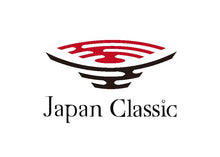【Japanese Pottery】What is Primary and Secondary Clays? An easy-to-understand explanation.
About the Author
Hayato Eihara
I am a Japanese resident living in Japan!
With years of experience, I share in-depth and detailed information about Japan with the world.
As part of my mission to promote Japanese culture, I also run Japan Classic, an online shop specializing in unique, high-quality tableware. If you're interested, feel free to check it out!
Table of Contents
- 1.Types of Clay: Primary vs. Secondary
- 2. Regional Clays and Pottery Traditions
- 3. How Clay Availability Shapes Pottery Traditions
- 4. The Geological and Artistic Impact of Clay Formation
1. Types of Clay: Primary vs. Secondary
The clay used in ceramics can be categorized based on its impurity content (organic materials such as wood fragments and fallen leaves).
・Primary clay (一次粘土, ichiji nendo) → Contains fewer impurities.
・Secondary clay (二次粘土, niji nendo) → Contains more impurities.
How Is the Purity of Clay Determined?
The amount of impurities in clay depends on whether the raw materials remain in place or are transported by natural forces.
1.Primary Clay → Forms in place, meaning it remains near its original rock source.
・Since it does not travel far, it retains its purity and has a high proportion of feldspar and quartz.
2.Secondary Clay → Forms after being transported by wind, water, or geological movement.
・During transport, it picks up organic matter and mineral impurities, giving it a more varied composition.
One example of an intermediate clay is Gairo-me Clay (蛙目粘土, Gairo-me nendo). This grayish clay has higher plasticity than kaolin but is less workable than Kibushi Clay (木節粘土). It is classified as a primary-like clay.
| Type | Impurities (Organic Matter) | Color | Usage | Clay Name | Plasticity |
|---|---|---|---|---|---|
| Primary Clay | Few | Nearly white | Porcelain | Kaolin, etc. | Low |
| Secondary Clay | Moderate to many | Colored (e.g., brown) | Pottery | Kibushi Clay, etc. | High |
2. Regional Clays and Pottery Traditions
Different regions have different amounts of primary and secondary clays, which significantly influenced the characteristics of local ceramic traditions in Japan.
For example, in Seto (瀬戸, Aichi Prefecture), large deposits of Gairo-me Clay led to the production of glazed ceramics (施釉陶器, seiyū tōki) from the medieval period onward.
・During the late Heian period (12th century), Seto was the only region producing glazed ceramics in Japan.
Why Was Seto Ideal for Glazed Pottery?
・Gairo-me Clay fires white, meaning it contains few impurities and low iron content.
・Since iron causes black or brown discoloration, its absence allows glazes to appear more vibrant and clear.
・The abundance of white-firing clay in Seto made it an ideal base for glazed ceramics.
Nearby regions, such as Tokoname (常滑, Aichi Prefecture) and Shigaraki (信楽, Shiga Prefecture), also had knowledge of glazed pottery but primarily produced unglazed ware.
・Shigaraki clay is colored due to its high feldspar content, while white clays were mainly sourced from the Shimogahara area of Mie Prefecture.
・Tokoname used white clay for simple bowls (山茶碗, yamajawan) but primarily worked with iron-rich red clay and Shudei clay (朱泥), which fired to a reddish-brown color.
Thus, different types of local clay dictated the styles and techniques of each pottery region.
3. How Clay Availability Shapes Pottery Traditions
Even within a single region, multiple types of clay often coexist, influencing the diversity of ceramic production.
For example, Seto had large deposits of both:
・Secondary clay (Kibushi Clay, 木節粘土) – Used for different types of ceramics.
・Primary clay (Gairo-me Clay, 蛙目粘土) – Ideal for glazed pottery.
Since Seto had already mastered glazing techniques, potters used iron-rich clay for black glazes (飴釉, ame-yū) and dark iron glazes (鉄釉, tetsuyū). Meanwhile, lighter clays were used for ash glazes (灰釉, hai-yū) with soft yellow-green hues.
Thus, the natural properties of the clay dictated the ceramic styles that became regional specialties.
4. The Geological and Artistic Impact of Clay Formation
When examining historical ceramics, paying attention to the clay’s texture and color provides insight into the geological history of the region.Clay deposits form over tens of thousands to millions of years, slowly accumulating through natural weathering and sedimentation.
・The geological conditions of the past determined which types of clay formed in each region.
・The creative vision and technical skill of potters then transformed those natural materials into distinct ceramic traditions.
Brighten Up Your Table.
We deliver vibrant, high-quality pieces directly from Japan to add color and elegance to your dining experience.







Leave a comment